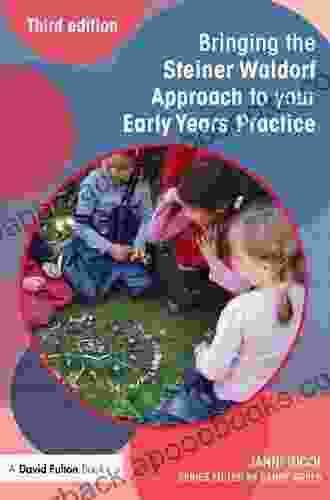Bringing the Steiner Waldorf Approach to Your Early Years Practice

The Steiner Waldorf approach to early childhood education is a holistic and developmentally appropriate approach that focuses on the whole child. This approach values play, creativity, and imagination, and it seeks to create a nurturing and supportive environment for children to learn and grow.
4.7 out of 5
| Language | : | English |
| File size | : | 2848 KB |
| Text-to-Speech | : | Enabled |
| Enhanced typesetting | : | Enabled |
| Word Wise | : | Enabled |
| Screen Reader | : | Supported |
| Print length | : | 138 pages |
The Steiner Waldorf approach is based on the work of Rudolf Steiner, an Austrian philosopher and educator who developed a holistic approach to human development. Steiner believed that children learn through play, and he developed a curriculum that is based on the natural stages of child development.
The Steiner Waldorf curriculum is divided into three stages: early childhood (birth to age 7),middle childhood (ages 7 to 14),and adolescence (ages 14 to 18). Each stage has its own unique curriculum that is designed to meet the developmental needs of children at that age.
In the early childhood stage, the curriculum focuses on play, creativity, and imagination. Children are encouraged to explore their environment and to learn through hands-on experiences. The curriculum also includes music, art, and movement, which are all important for the development of the whole child.
In the middle childhood stage, the curriculum becomes more academic, but it still maintains a focus on play and creativity. Children begin to learn reading, writing, and mathematics, but they also continue to explore the world around them through hands-on experiences. The curriculum also includes history, geography, and science, which are all important for the development of the whole child.
In the adolescence stage, the curriculum becomes more rigorous, and it prepares students for college and the workforce. Students continue to learn reading, writing, and mathematics, but they also begin to study more advanced subjects such as physics, chemistry, and biology. The curriculum also includes history, geography, and literature, which are all important for the development of the whole child.
The Steiner Waldorf approach to early childhood education is a holistic and developmentally appropriate approach that focuses on the whole child. This approach values play, creativity, and imagination, and it seeks to create a nurturing and supportive environment for children to learn and grow.
Benefits of the Steiner Waldorf Approach
There are many benefits to using the Steiner Waldorf approach to early childhood education. Some of the benefits include:
- Holistic development: The Steiner Waldorf approach focuses on the development of the whole child, including physical, intellectual, emotional, and spiritual development.
- Developmentally appropriate: The Steiner Waldorf curriculum is based on the natural stages of child development, and it is designed to meet the needs of children at each stage.
- Play-based learning: The Steiner Waldorf approach values play as a way for children to learn and grow. Children are encouraged to explore their environment and to learn through hands-on experiences.
- Creativity and imagination: The Steiner Waldorf approach encourages creativity and imagination in all areas of learning. Children are given the opportunity to express themselves through art, music, and movement.
- Nurturing and supportive environment: The Steiner Waldorf classroom is a nurturing and supportive environment where children feel safe and loved. Teachers are trained to create a positive and respectful learning environment.
How to Implement the Steiner Waldorf Approach
If you are interested in implementing the Steiner Waldorf approach in your early years practice, there are a few things you can do.
- Learn about the Steiner Waldorf approach: The first step is to learn about the Steiner Waldorf approach and its principles. There are many books and articles available on the subject, and there are also many Steiner Waldorf schools and early years centers that offer tours and workshops.
- Create a nurturing and supportive environment: The Steiner Waldorf classroom is a nurturing and supportive environment where children feel safe and loved. Teachers are trained to create a positive and respectful learning environment.
- Use developmentally appropriate materials: The Steiner Waldorf curriculum is based on the natural stages of child development, and it is designed to meet the needs of children at each stage. When choosing materials for your classroom, be sure to select items that are appropriate for the age and developmental level of your students.
- Encourage play and creativity: The Steiner Waldorf approach values play as a way for children to learn and grow. Children are encouraged to explore their environment and to learn through hands-on experiences. You can encourage play and creativity in your classroom by providing a variety of materials and activities that are open-ended and child-led.
- Be patient and observant: The Steiner Waldorf approach is a slow and gradual process. It takes time for children to learn and grow, and it is important to be patient and observant as they progress.
The Steiner Waldorf approach to early childhood education is a holistic and developmentally appropriate approach that focuses on the whole child. This approach values play, creativity, and imagination, and it seeks to create a nurturing and supportive environment for children to learn and grow. If you are looking for an approach to early childhood education that is based on sound principles and that is proven to be effective, then the Steiner Waldorf approach is a good option for you.
4.7 out of 5
| Language | : | English |
| File size | : | 2848 KB |
| Text-to-Speech | : | Enabled |
| Enhanced typesetting | : | Enabled |
| Word Wise | : | Enabled |
| Screen Reader | : | Supported |
| Print length | : | 138 pages |
Do you want to contribute by writing guest posts on this blog?
Please contact us and send us a resume of previous articles that you have written.
 Book
Book Novel
Novel Page
Page Chapter
Chapter Text
Text Story
Story Genre
Genre Reader
Reader Library
Library Paperback
Paperback E-book
E-book Magazine
Magazine Newspaper
Newspaper Paragraph
Paragraph Sentence
Sentence Bookmark
Bookmark Shelf
Shelf Glossary
Glossary Bibliography
Bibliography Foreword
Foreword Preface
Preface Synopsis
Synopsis Annotation
Annotation Footnote
Footnote Manuscript
Manuscript Scroll
Scroll Codex
Codex Tome
Tome Bestseller
Bestseller Classics
Classics Library card
Library card Narrative
Narrative Biography
Biography Autobiography
Autobiography Memoir
Memoir Reference
Reference Encyclopedia
Encyclopedia Peter G Northouse
Peter G Northouse Reinhard Friedl
Reinhard Friedl Patrick Wang
Patrick Wang Sabrina Smeraldini
Sabrina Smeraldini Mark Evan Bonds
Mark Evan Bonds Tom Mchale
Tom Mchale Mike Guillen
Mike Guillen Ronald Reagan
Ronald Reagan Jeff L Creasy
Jeff L Creasy Sabine Mutandwa Kouassi
Sabine Mutandwa Kouassi Matt Schild
Matt Schild Jodi Burnett
Jodi Burnett Jeffrey Koperski
Jeffrey Koperski Randy Alison Aussenberg
Randy Alison Aussenberg Jerry Mander
Jerry Mander Michael O Hanlon
Michael O Hanlon Jodi Kendrick
Jodi Kendrick Jo Hamya
Jo Hamya Lauren Frances
Lauren Frances Will Brehm
Will Brehm
Light bulbAdvertise smarter! Our strategic ad space ensures maximum exposure. Reserve your spot today!
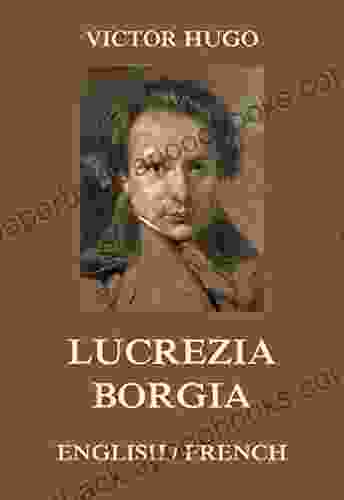
 Vernon BlairUnveiling the Enigmatic Lucrezia Borgia: A Literary Journey through Lope de...
Vernon BlairUnveiling the Enigmatic Lucrezia Borgia: A Literary Journey through Lope de...
 Nathaniel HawthorneCampaign Kit System, Dream Kit System, Licensing Kit System: The Ultimate...
Nathaniel HawthorneCampaign Kit System, Dream Kit System, Licensing Kit System: The Ultimate...
 Max TurnerOligarchy by Jeffrey Winters: Exposing the Hidden Power and Influence of the...
Max TurnerOligarchy by Jeffrey Winters: Exposing the Hidden Power and Influence of the... Henry GreenFollow ·9k
Henry GreenFollow ·9k Guy PowellFollow ·14k
Guy PowellFollow ·14k Brady MitchellFollow ·15.7k
Brady MitchellFollow ·15.7k William PowellFollow ·17k
William PowellFollow ·17k Ernest PowellFollow ·9.1k
Ernest PowellFollow ·9.1k Bradley DixonFollow ·8.3k
Bradley DixonFollow ·8.3k Israel BellFollow ·10.2k
Israel BellFollow ·10.2k Norman ButlerFollow ·16k
Norman ButlerFollow ·16k
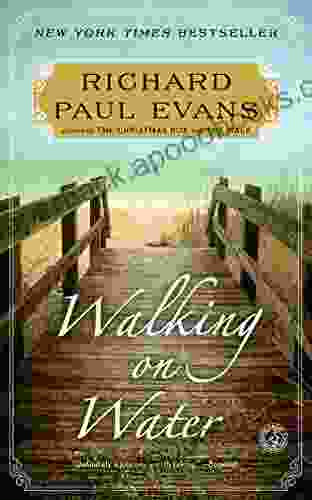
 Preston Simmons
Preston SimmonsEmbark on a Literary Odyssey with "Walking on Water": A...
Prepare to be swept...
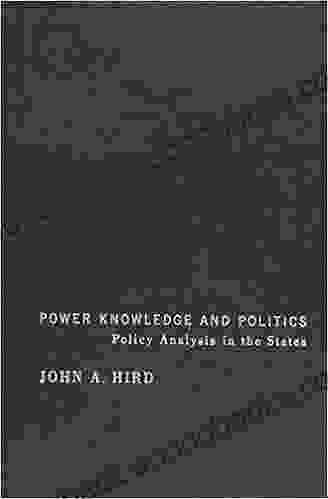
 Ernesto Sabato
Ernesto SabatoUnlocking Policy Analysis: Dive into the Intricacies of...
: The Realm of Policy...
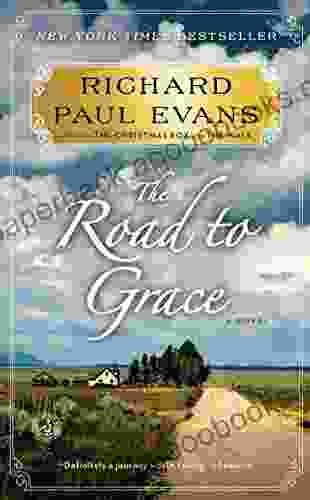
 Forrest Reed
Forrest ReedThe Road to Grace Walk: A Journey of Spiritual Growth and...
In the tapestry of life, we...

 Evan Simmons
Evan SimmonsTip Neill and the Democratic Century: A Political Odyssey...
The Rise of a Political Giant In the...

 Mark Mitchell
Mark MitchellUnwrap the Magic: A Review of Christmas Memory by Richard...
As the cold winter months draw near, and...

 Percy Bysshe Shelley
Percy Bysshe ShelleyBeyond the Veil: Delve into the Realm of Spirit with In...
Unveiling the Mysteries of the Unseen...
4.7 out of 5
| Language | : | English |
| File size | : | 2848 KB |
| Text-to-Speech | : | Enabled |
| Enhanced typesetting | : | Enabled |
| Word Wise | : | Enabled |
| Screen Reader | : | Supported |
| Print length | : | 138 pages |


